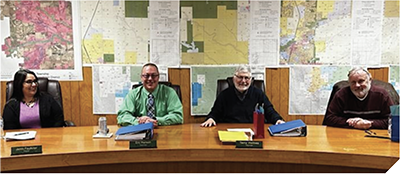Empire — Minnesota’s Newest City — Was Years in the Making
By Andrew Tellijohn

Empire Township, a small-but-growing community nestled among the thriving and expanding cities of Farmington, Rosemount, Lakeville, Apple Valley, and Coates, faced an increasingly urgent problem. As its neighbors expanded, Empire risked losing its most attractive land to annexation.
Faced with this threat, the township applied in early 2022 to become Minnesota’s newest city, protecting its borders for future growth.
That conversion became official in February, making it the state’s 855th city.
“There were some developments around the township of Empire that were filling up or about to get sold,” says Mayor Trent Larson, elected on Valentine’s Day to become the city’s first mayor. “The next piece of the property in the equation was in Empire Township. Rather than allowing somebody to come in and annex the property and have another city develop it, we decided to take it into our own hands and do it ourselves.”
Process took a year, planning took decades
Minnesota townships don’t incorporate as cities very often. The last one to do so was Credit River in 2021. But Empire officials have known this was coming for a long time. The city has lost some developable land to annexation in the past, and, with the communities around them growing and filling up quickly, the clock was ticking.
Though it had held off on actually making the move to enjoy some of the benefits of remaining a township, planning was well underway. Empire has long taken care of its own snow removal, trail and water maintenance, and other services. It had sewer, water, and all the makings of a plan.
“We were running as a city for over 20 years,” Larson says. “We had our own water. We had our own sewer district. We had ordinances, we had personnel in place.”
Empire had long partnered with the Dakota County Sheriff’s Department for law enforcement, but last year paid the department to add a dedicated officer and car. That wasn’t specifically part of the prep for becoming a city, Larson says, but it was the next step in operating like one.
“They’re paid by Dakota County, but we reimburse the county for wages, the vehicle, and all the benefits that go along with that,” he says.
Empire Township officially filed a petition for incorporation with the State of Minnesota in February 2022. It spent more than a year working through the process, communicating with residents, and holding public meetings.
“People were pretty supportive,” says Charles Seipel-Teng, the city administrator and clerk who joined the township four years ago. “People had a lot of questions, but we didn’t really have any opposition.”
The neighboring cities of Farmington, Lakeville, Rosemount, and Coates signed on in support of the move, as well. The process culminated with a daylong hearing in front of State Law Judge Jessica Palmer-Denig, who signed an order of incorporation a few weeks later.
“We worked closely with our planner, engineer, our attorney, and our accountants to get all the information together to make a case for incorporation, which we felt was really strong,” Seipel-Teng said.
Moving forward
Now that it has secured control of its own destiny, what’s next? Empire had a population of just over 3,000, spread across 30 square miles, as of 2018.
It’s an established community with residential housing availability of both townhome complexes and homes with large yards. There’s the Whitetail Woods Regional Park among other parks, walking and riding trails, and ample community events.
There’s industry — though one of the first developments expected to occur over the next few years is the conversion of a mining area into some other form of development, likely residential.
There’s agriculture activity and, popping up amid the cornfields — there is the Watt Munisotaram, the largest Cambodian Buddhist temple in North America.
“You’re driving through corn and bean fields and then, all of a sudden, you see this big temple that looks like something out of Southeast Asia,” Seipel-Teng says. “It’s kind of cool. They have a couple big celebrations out there every year.”
Already a growing city itself, Larson and Seipel-Teng say there are a couple primary spots available for growth in Empire.
As it does develop, it will likely have to add a second water tower in that area, near 70th Street and Highway 3. There is no firm timeframe for that development to take place.
“Growth will dictate that,” Larson says. “We’re not going to put it in there and then not have anybody build on it. We’re not that type of community. If we’re going to put something up there, we’re going to have a developer have skin in the game so that when we do that, we’re not stuck holding the whole thing.”
So far, so good
Meanwhile, the long preparation period involved in making the conversion from township to city seems to have paid off. Both Larson and Seipel-Teng say there have been few surprises so far.
It has taken a bit of adjustment switching from a three-person town board to a five-person mayor and City Council, Seipel-Teng says. Some members of the township board and planning commission were sticking around to see this conversion through and have since retired, so getting new people up to speed has taken some time.
“Getting them up to speed on all of our ordinances and everything that has been going on, the projects we’ve been working on, it’s a lot to learn,” he says. Otherwise, it’s largely business as usual. “This was definitely not spur of the moment,” Larson says.
Andrew Tellijohn is a freelance writer.

